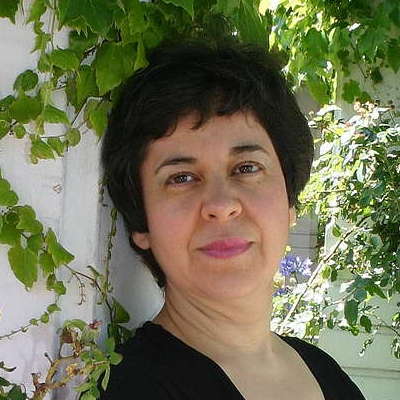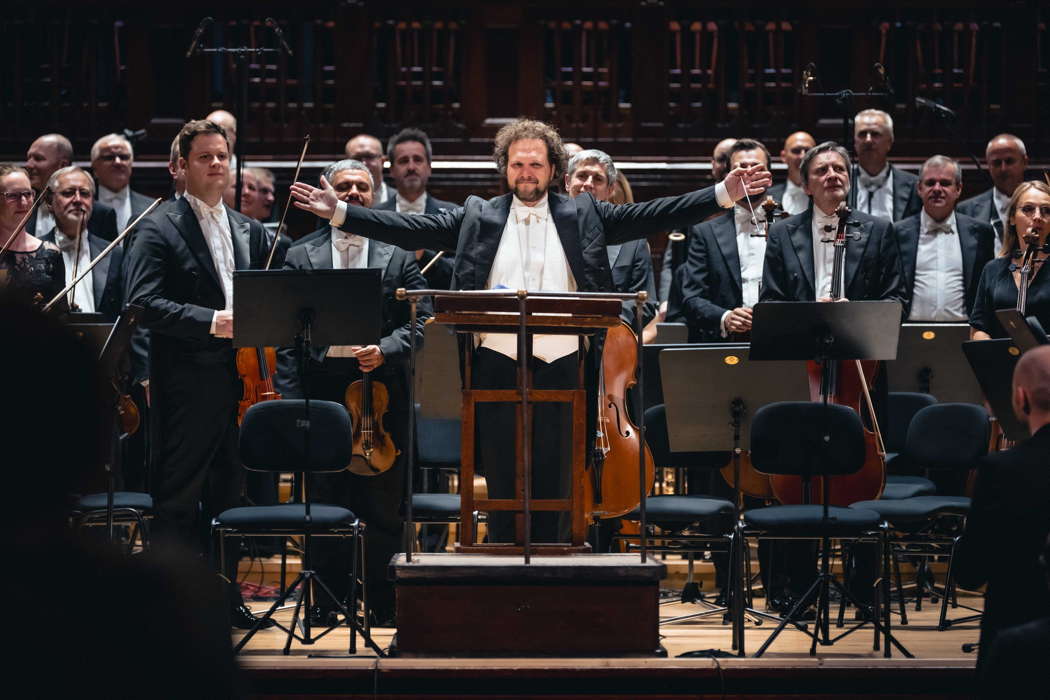 SPONSORED: A Seasoned Champion of New Music. Argentinian-American pianist Mirian Conti in conversation with Andrew Schartmann.
SPONSORED: A Seasoned Champion of New Music. Argentinian-American pianist Mirian Conti in conversation with Andrew Schartmann.
All sponsored features >>
- Sir Roger Norrington
- György Cziffra
- Woltera de Marez Oyens
- clavichord
- Gillian Keith
- Japanese
- Kiki de Montparnasse
- Benjamin Grosvenor
 DISCUSSION: John Dante Prevedini leads a discussion about Composers, individuals or collective?, including contributions from David Arditti, Halida Dinova, Robert McCarney and Jane Stanley.
DISCUSSION: John Dante Prevedini leads a discussion about Composers, individuals or collective?, including contributions from David Arditti, Halida Dinova, Robert McCarney and Jane Stanley.
A Darkly Intense Climax
MIKE WHEELER is impressed by Dvořák, Prokofiev and Shostakovich from Gabriela Montero and the Prague Symphony Orchestra conducted by Tomáš Brauner
Whatever attracted Dvořák to the gruesome fairy tales that form the basis of the four symphonic poems he composed towards the end of his life, they certainly demonstrate his ability to sustain a compelling musical narrative. The Prague Symphony Orchestra and conductor Tomáš Brauner began their programme - Royal Concert Hall, Nottingham, 11 February 2025 - with the second of them, The Noonday Witch, a cautionary tale of a mother who threatens her increasingly fractious child with the witch of the title if he doesn't behave himself. They caught the amiably folksiness of the opening, with string tone that was both rich and clear, turning to icy tremolandos, backed by muted brass, as the witch appeared. The theme accompanying father's return home felt a little subdued, but the laments for solo oboe - Libĕna Séquardtová - and clarinet - Martouš Kopáček - formed a quiet, eloquent moment, before Dvořák pulled out everything for the Wagnerian final calamity.
Gabriela Montero was the soloist in a performance of Prokofiev's Piano Concerto No 3 that gave every aspect of this multi-faceted work its due, from the lyrical opening clarinet duet, to the bustling, breezy music surrounding the piano's first entry, exuberant pounding energy from both soloist and orchestra, withdrawn episodes and rhythmically alert passages that reminded us that Prokofiev was one of the great ballet composers, all while avoiding any hint of the music breaking up into disjointed sections. In the gavotte-like theme for the second movement's variations, the orchestra was crisply rhythmic, Montero a little freer. But there was no sense of them being at odds, here or as they moved through the variations, from knockabout chase, to weightier matters, to utter stillness, coloured by wraith-like string sounds. The finale began firmly, with stealthy pacing from the orchestra. There was tenderness in the quiet episodes, Montero going on to produce both wry pirouette figures, and deep introspection, as required. Then, in the hectic final section, the sparks really flew.

Gabriela Montero. Photo © Anders Brogard
Montero is a noted improviser, and for her encore, she did something I've previously encountered only in organ recitals - she announced she would play an improvisation, and invited members of the audience to suggest themes. She picked two - 'The Girl From Ipanema' (full disclosure: that was my suggestion), and the theme from Ravel's Bolero. After playing around with them for a moment or two with just her right hand, she settled down to business, producing a mash-up of the two tunes that developed into something like a Bach Prelude - an astonishing display of impromptu virtuosity.
What do you do with a work like Shostakovich's Fifth Symphony, freighted as it is with so much extra-musical baggage? One possiblilty, as Brauner and the orchestra showed, is not to take the opening roughly by the scruff of the neck, but leave it somewhere to go.

Tomáš Brauner with members of the Prague Symphony Orchestra
As a opening gambit, it paid off convincingly, with each new section keeping something in reserve for the next. The strutting parade-ground march sounded pompously self-satisfied rather than just crudely aggressive. As we approached the end, Hana Knauerová's flute solo poignantly introduced the eerie quiet at end, with frosty celesta scales.
The second movement's clod-hopping waltz also had a vein of tongue-in-cheek delicacy, and the episode in which bassoon 1 and contrabassoon - Petr Sedlák and Jaroslav Jedličá - chortled away like smug turkeys was priceless. The three-part violin texture at the start of the third movement was carefully built up, layer by layer, with an unmistakeable air of desolation, topped by lamenting solo oboe, clarinet and flute in a passage of unearthly stillness, the viola/xylophone protest leading to a darkly intense climax.
Launching the finale, orchestra and conductor really got the bit between their teeth. As the music's tone turned first darkened, then faded, they allowed the music to draw breath, before looking forward to - what? They caught the coda's essential ambiguity perfectly. As the debate rumbles on about what the ending actually signifies, we were left wondering whether we will ever really know.
Copyright © 21 February 2025
Mike Wheeler,
Derby UK



